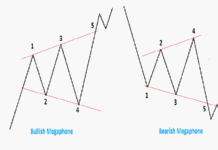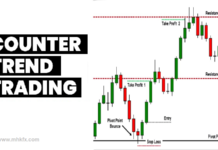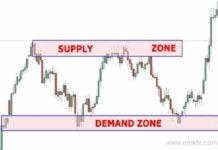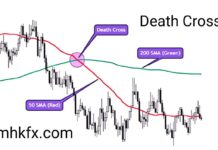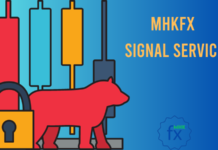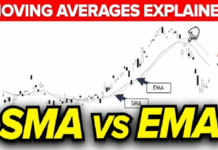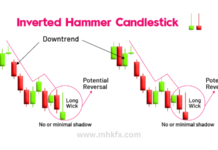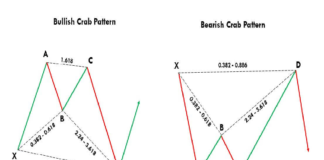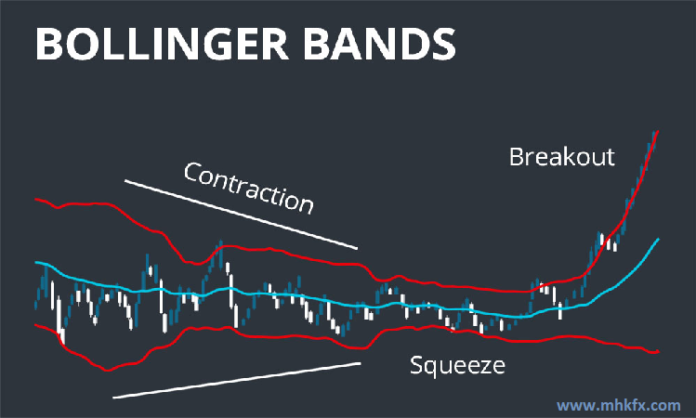
Bollinger Bands are a popular technical analysis tool used by traders and investors to gain insights into stock price movements. Created by John Bollinger in the 1980s, Bollinger Bands are composed of a moving average and two standard deviations plotted above and below the moving average. The upper and lower bands serve as a measure of volatility, providing traders with a valuable tool to analyze stock price movements and make informed decisions.
The standard deviation is a statistical measure that indicates how much a stock’s price deviates from the average price over a specified period. The upper and lower bands are calculated by adding or subtracting two standard deviations from the moving average. The upper band is considered a resistance level, and the lower band is considered a support level. When the stock price approaches the upper band, it is considered overbought, indicating that the stock is likely to reverse direction. Conversely, when the stock price approaches the lower band, it is considered oversold, indicating that the stock is likely to move higher.
One of the significant advantages of Bollinger Bands is that they provide traders with valuable information about potential support and resistance levels. When the price of a stock approaches the upper band, it is considered a potential resistance level, indicating that the stock price is unlikely to move higher. Conversely, when the price approaches the lower band, it is considered a potential support level, indicating that the stock price is unlikely to move lower.
Traders also use Bollinger Bands to determine the strength of a trend. If the price of a stock is trending upward, and the upper band is continually rising, it suggests that the upward trend is strong and likely to continue. Conversely, if the lower band is continually falling, it indicates that the downtrend is strong and likely to continue.
Another advantage of Bollinger Bands is that they can provide traders with valuable information about potential breakouts or reversals in stock prices. When a stock price approaches the upper or lower band, it is considered overbought or oversold, respectively. This is a signal that the stock price is likely to reverse direction, making it an ideal time to buy or sell, depending on the direction of the expected price movement.
Traders also use Bollinger Bands to determine whether a stock is experiencing high or low volatility. When the bands are narrow, it suggests that the stock is experiencing low volatility and may be preparing for a significant price movement. Conversely, when the bands are wide, it indicates that the stock is experiencing high volatility, and traders should adjust their strategies accordingly.
Bollinger Bands signal possible market volatility ahead
As an investor or trader, one of the most critical aspects of the market is volatility. Volatility can be both a blessing and a curse, as it can create opportunities for substantial gains but also carries significant risk. Therefore, understanding how to interpret market signals, such as Bollinger Bands, can be essential in making informed investment decisions.
Bollinger Bands were created by John Bollinger in the 1980s and have since become a popular tool among traders and analysts. Bollinger Bands are a technical analysis tool that measures volatility by plotting two standard deviations above and below a moving average. The upper and lower bands provide an indication of price movements, with the upper band indicating a potential resistance level and the lower band suggesting a possible support level.
One of the most significant benefits of Bollinger Bands is that they can signal potential market volatility ahead. When the bands are narrow, it typically suggests that the market is experiencing low volatility, and a breakout in either direction is imminent. Conversely, when the bands are wide, it indicates that the market is experiencing high volatility, and a significant price movement could be in store.
When Bollinger Bands narrow, it is known as a squeeze. A squeeze is often followed by a sharp price movement as the market breaks out of the narrow range. As the bands begin to widen, it suggests that the market is becoming more volatile, and traders should adjust their strategies accordingly. For example, during periods of high volatility, traders may choose to use wider stop-loss orders to mitigate the risks of a significant price movement.
Bollinger Bands can also provide an indication of market direction. If the price of an asset is trending upward and the upper band is continually rising, it suggests that the upward trend is likely to continue. Conversely, if the lower band is continuously falling, it indicates that the downtrend is likely to continue.
It is essential to note that Bollinger Bands are not foolproof and should not be used in isolation to make investment decisions. Traders and investors should also consider other technical indicators, such as volume, moving averages, and relative strength index (RSI), in conjunction with Bollinger Bands to make informed decisions.
Traders turn to Bollinger Bands for insight on stock price movements
Bollinger Bands are a popular technical analysis tool used by traders and investors to gain insight into stock price movements. Created by John Bollinger in the 1980s, Bollinger Bands are composed of a moving average and two standard deviations plotted above and below the moving average. The upper and lower bands serve as a measure of volatility, providing traders with a valuable tool to analyze stock price movements and make informed decisions.
One of the primary reasons traders turn to Bollinger Bands is to identify potential breakouts or reversals in stock prices. When a stock price approaches the upper or lower band, it is considered overbought or oversold, respectively. This is a signal that the stock price is likely to reverse direction, making it an ideal time to buy or sell, depending on the direction of the expected price movement.
Traders also use Bollinger Bands to determine the strength of a trend. If the price of a stock is trending upward, and the upper band is continually rising, it suggests that the upward trend is strong and likely to continue. Conversely, if the lower band is continually falling, it indicates that the downtrend is strong and likely to continue.
Another advantage of Bollinger Bands is that they can provide traders with valuable information about potential support and resistance levels. When the price of a stock approaches the upper band, it is considered a potential resistance level, indicating that the stock price is unlikely to move higher. Conversely, when the price approaches the lower band, it is considered a potential support level, indicating that the stock price is unlikely to move lower.
Traders also use Bollinger Bands to determine whether a stock is experiencing high or low volatility. When the bands are narrow, it suggests that the stock is experiencing low volatility and may be preparing for a significant price movement. Conversely, when the bands are wide, it indicates that the stock is experiencing high volatility, and traders should adjust their strategies accordingly.
It is essential to note that Bollinger Bands should not be used in isolation to make investment decisions. Traders should also consider other technical indicators, such as volume, moving averages, and relative strength index (RSI), in conjunction with Bollinger Bands to make informed decisions.
Bollinger Bands tighten as market uncertainty grows
Bollinger Bands are a popular technical analysis tool used by traders to measure volatility and identify potential price movements. One of the unique features of Bollinger Bands is that they can tighten or narrow as market uncertainty grows. This narrowing of the bands is known as a squeeze and can provide valuable insights into potential market movements.
During periods of market uncertainty, traders often turn to Bollinger Bands to gain insights into potential price movements. When the bands tighten, it is a signal that the market is experiencing low volatility and preparing for a significant price movement. This is because when the bands are narrow, it indicates that the stock price is trading within a tight range, and the market is experiencing a lack of direction.
Traders use Bollinger Bands to determine the direction of the expected price movement. If the bands are tightening around the stock price, it suggests that a significant price movement is imminent, and traders should be prepared to act. However, the direction of the price movement is unknown, and traders should use other technical indicators and market analysis to make informed decisions.
The narrowing of Bollinger Bands is a signal of market uncertainty and can be a useful tool for traders to adjust their strategies. During periods of high uncertainty, traders may choose to adjust their risk management strategies to mitigate the risks of a significant price movement. This may include using wider stop-loss orders or reducing their position sizes to minimize their exposure to market volatility.
Traders also use Bollinger Bands to identify potential breakouts or reversals in the market. When the bands tighten, it indicates that a significant price movement is imminent, and traders should be prepared to take advantage of potential breakouts or reversals. This may involve taking a long or short position, depending on the expected direction of the price movement.
It is essential to note that Bollinger Bands should not be used in isolation to make investment decisions. Traders should also consider other technical indicators, such as volume, moving averages, and relative strength index (RSI), in conjunction with Bollinger Bands to make informed decisions.
Conclusion
Bollinger Bands are a valuable tool for traders and investors looking to gain insight into stock price movements. By analyzing the width of the bands and their relationship to the stock price, traders can identify potential breakouts or reversals, determine the strength of a trend, and pinpoint potential support and resistance levels. However, as with all technical indicators, it is essential to conduct proper due diligence and consider other factors before making any investment decisions.
Click to sign up with ICMarkets
Related Post:
Forex Traders Find Profit Potential in Triangle Patterns : A Technical Analysis Trend

